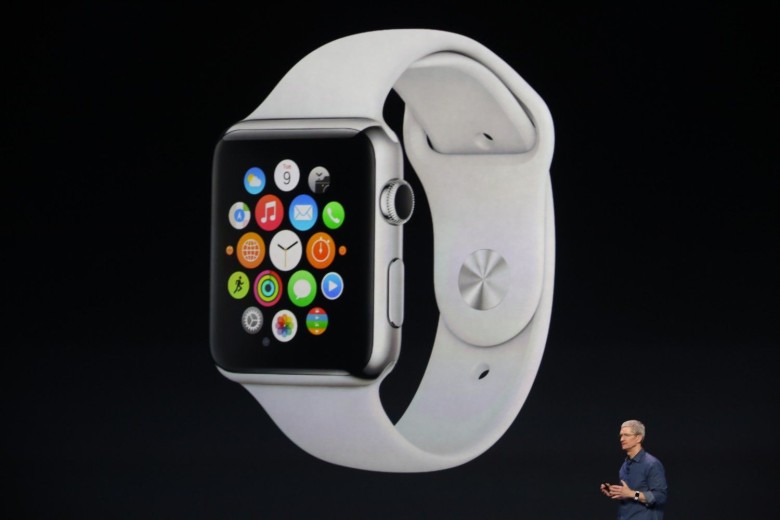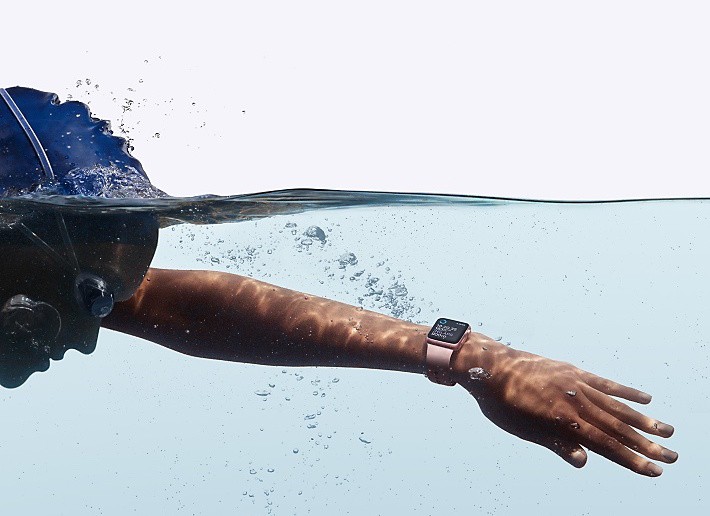The writing has been on the wall for smartwatches ever since Cupertino chose to focus on sports and fitness features for Apple Watch Series 2. Smartwatch sales are plummeting, and fitness seems to be the only profitable area remaining in the wearables sector.
More evidence of this trend emerged this week, with smartwatch trailblazer Pebble reportedly being acquired by fitness wearables specialist Fitbit. We might very well be witnessing the demise of the smartwatch as we know it.
So how did we get here? Is Apple Watch really only fit for fitness, or could it still one day fulfill its destiny and become a true wrist-based computing platform?
Cupertino’s pivot toward fitness
When Tim Cook unveiled the Apple Watch in 2014, it was all about apps. Whatever you wanted to do with your watch, there would be an app for that. It was like the iPhone all over again, but this time we would wear it on our wrists.
Two years later, things look very different. Now it’s all about fitness, activity tracking and health. Any other features are buried at the bottom of the page on the Apple Watch website.
This is a massive pivot. I can’t think of any other example of Apple so completely repurposing a product in an attempt to save it. When the Newton was struggling back in 1997, Steve Jobs did not try to find some new job for it to do. He just scrapped it. The same is true of the ill-fated Power Mac G4 Cube.
By most companies’ standards, Apple Watch is not struggling. It is, after all, a market leader, accounting for 45.6 percent of all smartwatch shipments.
But Apple is not most companies. The company sold 45 million iPhones last quarter, but only 1.1 million Apple Watches. In other words, only a tiny fraction of iPhone owners were tempted into buying its smartwatch sibling.
For Cupertino, those numbers must be disappointing. No wonder Apple is trying something new with Apple Watch Series 2. But can focusing on fitness make the figures look healthier?
The fat lady is singing for non-fitness wearables
Apple is not alone in donning lycra and getting sweaty with its smartwatch. It seems that fitness is now the only game in town for wearable makers.
Pebble was one of the first to market with a smartwatch. It captured the imagination of gadget fans the world over, and boasted one of the most successful Kickstarter campaigns of all time. As a Bluetooth device providing a second screen for a smartphone, Pebble was clearly a forerunner to the Apple Watch and Android Wear watches that followed.
Fitbit’s planned acquisition of Pebble means the end of the line for the trailblazing smartwatch. It is telling that Pebble was snapped up by a fitness specialist: The Pebble smartwatch will presumably be scrapped, while bits of the Pebble OS operating system will be repurposed for use in future Fitbit wearables.
In other words, like Apple Watch, Pebble is destined to become another fitness gadget.
Pebble’s possible acquisition wasn’t the only smartwatch news this week. Lenovo Moto now says it has no plans for a successor to the Moto 360 because the company does not see “enough pull in the market.”
Smartwatches are a solution looking for a problem

Photo: Apple
I believe the reason wearables makers are struggling right now is because today’s smartwatches just don’t do anything that is particularly useful. The big idea was that they would eliminate the need for users to take their smartphones out of their pockets. Many tasks that you previously did with your phone could be accomplished by simply glancing at your wrist instead.
The trouble is, most users don’t seem to have much of a problem with taking their phones out of their pockets. It’s just not such a big hassle that people can justify shelling out for another expensive gadget.
By pivoting toward fitness, Apple has effectively given up on smartwatches (for now at least). Instead, Cupertino is marketing Apple Watch as a different product altogether: a sports watch. Before, Apple was competing with Pebble, Samsung and Motorola. Now it is going up against Garmin, TomTom and Suunto.
Apple has entered an entirely new market. Which is all well and good, but the market of people who run and swim regularly is tiny. It’s certainly nothing like the mass market appeal Apple’s products normally enjoy.
So where did Apple go wrong, and what does this mean for the future of smartwatches?
Time to go back to business school
In his classic business strategy book, The Innovator’s Dilemma, Harvard Business School professor Clayton Christensen explained that many companies fail to adopt disruptive new technology because they remain too focused on short-term profit. Steve Jobs was deeply influenced by Christensen’s work. Some have even argued that Jobs solved the innovator’s dilemma by focusing Apple on making great products rather than big profits.
But this week, a different theory of Christensen’s has been making headlines. UBS analyst Steven Milunovich told Business Insider that he believes Apple may be losing its way because it is failing to heed Christensen’s “jobs to be done” theory. This theory proposes that companies tend to focus on refining what they already sell, rather than identifying what their customer actually needs.
For example, a company may sell quarter-inch drills, while customers are actually buying quarter-inch holes. Similarly, a lawnmower manufacturer sells machines for cutting grass, while its customers are buying tidy lawns. Christensen’s jobs-to-be-done framework is based upon this insight: Customers have problems, and they “interview” products to decide which one gets the job of solving that problem.
In the past, Apple has had a great track record of finding “jobs to be done.” Not necessarily what we want, but rather what we need — even if we didn’t realize we needed it. For example, the first iMac’s job was to make it easier to get online. The iPod’s job was to put 1,000 songs in your pocket. The original iPhone’s job was to combine MP3 player and smartphone, so you only had to carry around one device.
Milunovich argues that Apple may be losing this focus on jobs to be done. Apple Watch may have made sense as a logical next step after iPhone and iPad, and it seemed to be what everyone was doing at the time. But since Apple’s wearable did not perform any meaningful job for most customers, its failure was inevitable.
Timing is everything: Did Apple Watch launch too soon?

Photo: Graham Bower/Cult of Mac
Apple normally waits to launch a new product until it finds a new technology that can truly differentiate the device. There were many MP3 players on the market before the iPod, but Apple was the first to use a miniaturized portable disk drive that could store thousands of songs. Similarly, many smartphones preceded the iPhone, but Apple was the first to use a multi-touch display instead of a plastic keyboard.
Apple Watch was different, however. It was a me-too product, with features that were essentially the same as those of Google’s Android Wear. Its only differentiators were that it worked with iOS and had a much nicer design. Apple Watch offered no breakthrough technology to make it stand out in the marketplace. And, perhaps most importantly, Apple hadn’t found any meaningful job to be done for its smartwatch.
So why is Cupertino persisting with Apple Watch? Why repackage it as a sports watch instead of nixing it, as Jobs did with the Newton?
I believe this is because Apple has not given up on smartwatches. Fitness is just a tactical short-term play to keep a toe in the water until the technology is ready to enable a truly game-changing wearable.
A smartwatch should eliminate the need for pockets
In 1868, the wristwatch was invented, according to Guinness World Records, and soon became a practical alternative to pocket watches. The Filofax personal organizer in 1921 consolidated an address book and diary into a single volume. The iPhone in 2007 made separate phones, personal organizers and MP3 players redundant. And Apple Pay in 2014 eliminated the need for physical credit cards, cash and wallets.
[contextly_auto_sidebar]
Innovation has steadily and ineluctably been consolidating and eliminating the need to carry things in your pocket or purse.
The job of the original Apple Watch was to reduce the number of times you had to take your iPhone out of your pocket. But perhaps the real job it should have performed was to eliminate the need for you to have your phone in your pocket in the first place. Or even to go one step further and eliminate the need for pockets altogether.
These days we rarely go anywhere without taking our phones with us. We are now so used to being in contact with everyone, all the time, it just feels weird to be disconnected. And yet, as phones have become bigger and bulkier, there are times when I’d prefer not to take mine with me. The larger screen is great most of the time. But when I’m wearing certain outfits, like shorts in the summer or on those rare occasions when I put on a suit, I just don’t want the extra bulk in my pocket. Even when I’m wearing jeans, it feels more comfortable without the pockets filled with gadgets.
When I’m out and about, my iPhone is great as a smaller alternative to carrying a laptop. But there are also plenty of times when I don’t need a big screen — like a night out drinking, for example, where my iPhone is just a costly thing I might lose. In those situations, I’m only taking it with me to stay in touch with colleagues, friends and family -– I really don’t need its tablet-like features. A tiny, wrist-based device would be sufficient — providing it had cellular data.
Apple Watch Series 3 with built-in cellular data will be a whole different story
Right now, Apple Watch is just a companion device to an iPhone because it does not have built-in cellular data. But when Cupertino finds a way to add this, the Apple Watch will suddenly have a very important job to do.
If Apple Watch Series 3 finally brings cellular connectivity, it will eliminate the need to always have your iPhone in your pocket. And that would be a game-changer. If Apple also adds a solution for opening my front door using my Apple Watch instead of regular keys, I may finally be able to empty my pockets altogether.
As a fitness fanatic, I would love to believe that Apple is now serious about sport watches. But I’m not convinced. Sure, fitness will always be an important feature for Apple Watch, but only as one part of a bigger whole. By positioning Series 2 as a fitness wearable, I believe Apple is keeping its watch ticking over until the technology is ready to unleash Series 3 with built-in cellular data. And that could very well be the next big thing.


